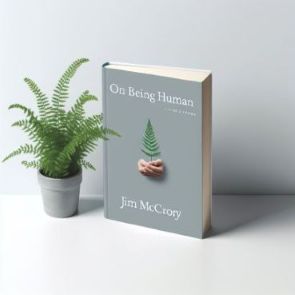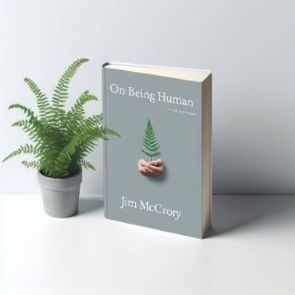Many young people today have been fed two great lies. First, there is no objective morality. And two, because society deny the existance of God, the young grow up with a concept of oblivion.

“He has made everything beautiful in its time.
He has also set eternity in the hearts of men words "
Ecclesiastes 3:12.
I was born and raised in the maritime city of Glasgow. Inevitably, it looks outward. And yet, where we travel shapes who we are inwardly. Now, I am crossing over to the Island of Bute on the MV Bute, reading about the fascinating philosophical thought experiment known as the Ship of Theseus, first proposed by Plutarch.
Theseus, the mythological hero, sailed from Greece to slay the Minotaur. After completing his task, he returned to Athens and left his ship to decay. Over time, carpenters gradually replaced each plank of the ship. This raises a question: which ship is the Ship of Theseus—the newly restored one or the old parts rotting on the beach?
Our bodies are not unlike that paradox. Red blood cells form, embark on an arduous journey through the grand rapids of our arteries, veins, and capillaries—facing proportionally life-threatening obstacles—only to sail into oblivion after their two-month voyage. Skin cells decay, leading to weakening avalanches and shifting continental plates. They fall from their plateaus, aided by cascading water, gravitating toward terminal, anticlockwise whirlpools before their second day ends. Estimates vary, but the body replaces itself every seven to ten years. Like Plutarch’s thought experiment, this raises questions of identity and thoughts of eternity as I ponder the body’s self-renewal mechanism.
But here lies the paradox: neurons, those cells that drive the brain, remain with us, in some cases, for life. Though I am advancing in years, there’s still a young man living inside me. I can call him up at any time to visit the places he once visited, meet the people he met, and relive the joys he experienced. This convinces me of an action God took before I was born: setting eternity in my heart.
There is something profoundly beautiful in understanding that while our physical form undergoes continuous change, the essence of who we are remains anchored in something eternal. As I stand on the deck of the MV Bute, the wind tousling my hair and the vast expanse of the sea stretching out before me, I am reminded of the eternal nature that God has set within us. The same sense of eternity that inspired the ancient philosophers to ponder the Ship of Theseus and the same eternal truth that we find in the Scriptures.
In this ever-changing world, the constancy of God’s creation and His eternal purpose for our lives offer a reassuring anchor. Our journeys, much like those of Theseus and his ship, involve renewal and transformation. Yet, in each phase, there is a beauty that God has ordained, a purpose that transcends time.
Reflecting on these thoughts, I find peace in the knowledge that while the external may change, the core of our being is eternally held by God. This realization brings a profound sense of wonder and gratitude for the life I have been given, and for the eternal journey that lies ahead.
























